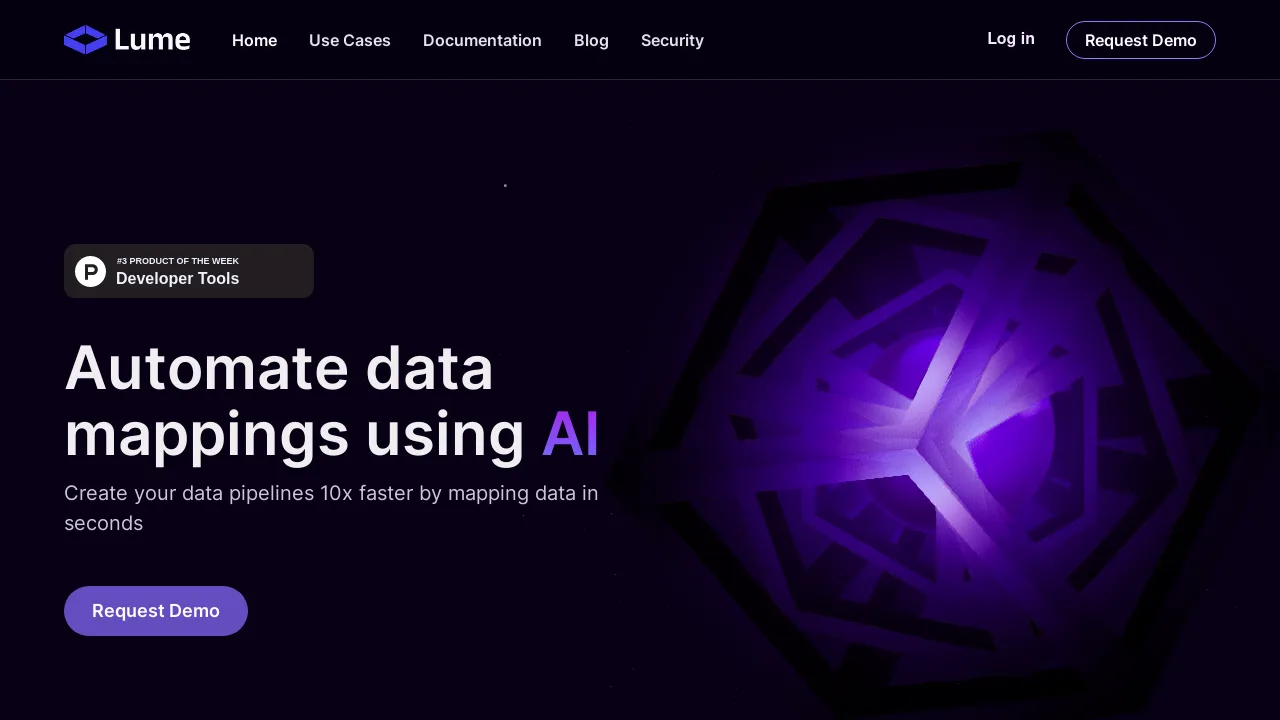Lume

Lume Overview
Lume is a powerful AI-powered tool designed to streamline and enhance your data management processes. It allows you to onboard customers and partners faster by ingesting their unique data in seconds. Lume also enables you to normalize messy data from various data systems, build hundreds of data pipelines instantly, and detect changes to your source data or target models. With Lume, you can handle complex data mappings with ease, save and deploy your mappers for future use, and integrate AI-powered data mapping into your systems. It is built with top-notch security and is SOC2 Type-1 and Type-2 certified.
Lume Highlights
- Lume allows for fast onboarding of customers and partners by ingesting their unique data in seconds.
- It enables the normalization of messy data from various data systems, ensuring consistency and accuracy.
- Lume provides the ability to build hundreds of data pipelines instantly, reading from and writing to any source and any destination models.
Use Cases
A business that needs to onboard a large number of customers quickly can use Lume. The company can ingest the unique data of each customer in seconds, significantly reducing the time it takes to onboard a new customer.
The business is able to onboard customers faster, improving customer satisfaction and allowing the business to scale more efficiently.
A company dealing with messy data from various systems can use Lume to normalize this data. This ensures consistency and accuracy across all data systems, making it easier to analyze and use the data effectively.
The company has cleaner, more accurate data that can be used for more effective decision-making and strategy planning.
A business that needs to build multiple data pipelines can use Lume. The tool allows the company to build hundreds of data pipelines instantly, reading from and writing to any source and any destination models.
The business can quickly and efficiently build data pipelines, saving time and resources. This allows the company to focus on using the data to drive business decisions, rather than spending time on the technical aspects of data management.